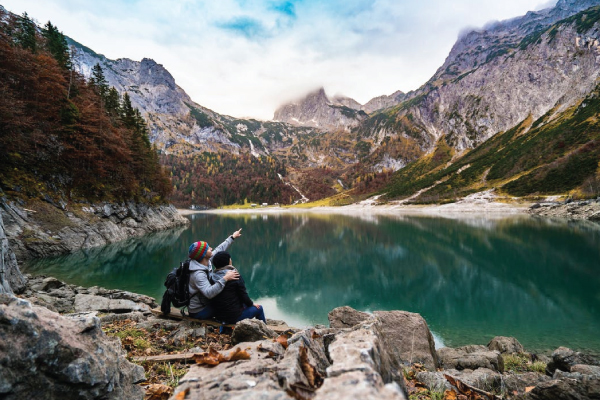A Critical Event Management Company
Outdoor Adventure Tips for Sourcing Clean Drinking Water
 Outdoor Adventure and Finding Water Out in the Wilderness
Outdoor Adventure and Finding Water Out in the Wilderness
Outdoor adventure and extreme tourism have become a growing trend among North Americans looking to explore the outdoors and try something a little different. Remote camping and adventure tourism go hand-in-hand, and for those brave enough to challenge themselves out in the wild, learning how to source clean drinking water can be lifesaving.
Water is essential to survival out in the wilderness; without it, your next trip could be cut short. The human body requires at least two liters of drinking water per day to remain in good health, prompting the need for a regular supply of clean drinking water. During a remote camping trip, adventurers are likely to be in an active state, and those two liters will quickly become the bare minimum for survival.
Before your next trip, use these tips for sourcing clean drinking water to ensure you can thrive in the wilderness and put your body to the test.
Outdoor Adventure and the Body’s Need for Water
Keep in mind that without a proper source of drinking water, you are likely to only last just three days before succumbing to dehydration. Water should be your first priority for survival. Food and shelter are important, but they offer much more generous timelines for survival compared to water. Without food, you are likely to survive for up to three weeks, while a lack of shelter will degrade your health much slower than dehydration.
Not every water source is created equal, and a wrong decision in a survival situation can be disastrous. One important rule to follow while camping in the wild is to never drink water that appears discolored or has any sort of odor. Even with special filtration and treatment techniques, if a toxin or pollutant has contaminated the water, it can never be made into suitable drinking water.
 Outdoor Adventure: The Best Sources of Water in the Wild
Outdoor Adventure: The Best Sources of Water in the Wild
Your two main sources of water are likely to be either underground or from a lake or stream. Groundwater can be murky and unpleasant to drink, so finding a suitable source of drinking water relies on our senses. In a heavily forested location, listen for running water, which should be flowing downwards due to gravity. Bodies of water can also be spotted by looking to the sky, as early morning clouds and fog tend to congregate over water. In fact, the sky will reflect differently off a lush forest compared to a large stream or lake. Look to the skies and try and spot the bluest portions, which could be a sign of available water below.
Explore available streams in the area and look for water that is flowing quickly. Head upstream and find the source of the flowing water that is running the fastest, which is likely the cleanest water available. Try and spot possible pollutants such as decaying plants or animals. In these cases, head further upstream and use a flowing source and hasn’t made its way to potential contaminants.
When there are no streams or lakes available, groundwater can also be an option. Spotting mud patches is a sure sign of an underground water source. You can also look for vegetation that is especially green or plentiful, as this will likely be another sign of underground water. You will have to dig for your water, collect it, then let it settle so the dirt can collect at the bottom. Take a close look after it has settled, and carefully pour the water that isn’t discolored into another container.
Outdoor Adventure and Water Purification
In a do-or-die situation, you might be faced with the predicament of having found a source of water but no means to treat or purify it. When presented with the decision of drinking potentially contaminated water versus dying of hydration, your best bet is to drink it. Dehydration can settle in extremely quickly, potentially killing you much faster than contaminated water.
Follow our guide on emergency water filtration techniques to learn more.
 Outdoor Adventure and Exploration with Overwatch and Rescue
Outdoor Adventure and Exploration with Overwatch and Rescue
For the outdoor adventurer or extreme tourist, survival tourism can be a life-changing and rewarding experience. But becoming more familiar with nature requires careful planning to ensure that your trip goes smoothly without issue. Take every precaution necessary before your next adventure trip and seek products that can respond to an emergency, even out in the wilderness.
FocusPoint International is now offering an all-encompassing and life-changing emergency assistance plan for every global traveler and those that like to get outdoors and be active. Building on the fundamentals of FPI’s flagship CAP Travel Medical and Security Assistance Plan, the Global Overwatch and Rescue Plan responds to everything from common incidents associated with recreational activities, vehicle, motorcycle, and even snowmobile accidents, to the many hazards of adventure travel in the world’s most remote destinations.
O&R is an emergency assistance plan that includes unlimited on-demand advice, Satellite Emergency Notification Device (SEND)/GPS monitoring, Search and Rescue (SAR) escalation, and fully-funded assistance, including evacuations from the point of incident, or a treating facility for those that become hospitalized due to injury or illness, to include COVID-19, and/or security incidents that impact customers during a qualifying event or period of travel.
O&R also includes a robust technology platform that integrates with 3rd party Internet of Things (IoT) and Satellite Emergency Notification Devices (SEND), allowing for seamless tracking and alert notifications to streamline the escalation to emergency response services if and when needed.
Find peace of mind knowing that FocusPoint International’s Global Overwatch and Rescue Plan is there when you need it most.
